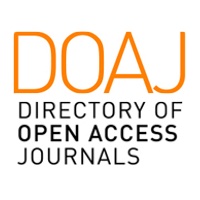PHYSICAL STATE OF PODZOLIZED CHERNOZEM DONE WITH MINIMIZED SOIL TILLAGE
DOI:
https://doi.org/10.32782/2310-0478-2023-2-13-19Keywords:
plowing, flat-cutting cultivation, tillage depth, structure, density, porosity, moisture, podzolized chernozemAbstract
In a stationary experiment on podzolized chernozem, its physical condition was studied when plowing was replaced by flat-cut loosening at different depths under a five-field crop rotation: barley – soybean – rapeseed – wheat – linseed. It was investigated that the content of the agronomically valuable fraction of structural aggregates against the background of flat-cut cultivation was not lower compared to plowing. On average, during the crop rotation for 2012–2017, a tendency to increase this indicator in the 0–30 cm soil layer with flat-cut loosening compared to plowing by 0.9–1.2 % was established. The reduction of the depth of both cultivation measures had little effect on the structure of the soil. The density of the soil in the 0–30 cm layer under both ways of minimizing the main tillage had only a tendency to increase, but at the same time it did not exceed the limits of optimality under any culture, that is, it was not higher than 1.30 g/cm3. The total porosity of the arable layer of the soil at the beginning of the growing season of cultivated crops from the replacement of multi-depth plowing with the same flat-cut loosening slightly decreased in absolute terms, remaining within the limits of satisfactory parameters for this indicator. And if at the beginning of the growing season, the difference in total porosity on average for all crops grown in crop rotation did not exceed 1.7, respectively; 11.6 and 1.5 %, and by the middle of the growing season it was even lower – 0.9, respectively; 1.0 and 0.7 %. Neither the replacement of shelf tillage by shelf-less tillage, nor the reduction of both methods of main tillage had practically no effect on the spring reserves of available moisture in the meter-long soil layer. Thus, at the beginning of the growing season of barley, soybeans, rapeseed, wheat, and linseed, the largest difference between the reserves of available moisture in the meter layer did not exceed 1.5 according to the cultivation options, respectively; 0.3; 1.1; 1.5 and 1.9 mm, by the middle of the growing season – 5.2, respectively; 8.1; 5.4; 4.3 and 5.6 mm and at the end of the growing season, respectively, 5.6; 4.7; 5.2; 1.7 and 4.5 mm.
References
Бінерт Б. Вплив способів обробітку ґрунту на його структурно-агрегатний склад і урожайність ячменю ярого. Вісник Львівського національно аграрного університету. 2008. № 12 (2). С. 38–41.
Бінерт Б., Шувар І. Вплив способів обробітку та гербіциду на водно-фізичні показники ґрунту і продуктивність ячменю ярого в умовах західного Лісостепу. Вісник Львівського національно аграрного університету. 2008. № 12 (2). С. 22–26.
Войцехівська О.С. Вплив систем основного обробітку ґрунту і удобрення в коротко ротаційних сівозмінах на урожайність ячменю озимого в південному Степу України: автореф. дис. … канд. с.-г. наук: 06.01.01 – загальне землеробство. Київ, 2013. 20 с.
Литвиненко І.В. Відтворення родючості ґрунту в агроценозі кукурудзи за екологізації землеробства в Правобережному Лісостепу України: автореф. дис. … канд. с.-г. наук: 06.01.01 – загальне землеробство. Київ, 2012. 20 с.
Найдьонова В.О. Вплив основного обробітку ґрунту та інокуляції насіння на продуктивність сої на зрошуваних землях півдня України: автореф. дис. … канд. с.-г. наук: 06.01.12 – сільськогосподарської меліорації. Херсон, 2016. 20 с.
Оленюк А.М. Обробіток ґрунту, удобрення і догляд за посівами цукрових буряків з елементами біологізації землеробства в Південно-західному Лісостепу України: автореф. дис. … канд. с.-г. наук: 06.01.01 – загальне землеробство. Дніпропетровськ, 2009. 20 с.
Павлишак Я.Я., Бегей С.С. Вплив основного обробітку ґрунту на врожайність озимої пшениці в умовах Прикарпаття. Вісник Черкаського інституту агропромислового виробництва. 2010. Вип. 10. С. 170–173.
Панченко О.Б. Відтворення родючості чорнозему типового залежно від систем основного обробітку ґрунту і удобрення в зерно просапній сівозміні Правобережного Лісостепу України:автореф. дис. … канд. с.-г. наук: 06.01.01 – загальне землеробство. Київ, 2016. 26 с.
Ременюк Ю.О. Продуктивність ланки сівозміни за різних обробітків ґрунту в умовах Лісостепу України: автореф. дис. … канд. с.-г. наук: 06.01.01 – загальне землеробство. Київ, 2009. 22 с.
Черячукін М.І. Наукове обґрунтування та розроблення заходів основного обробітку ґрунту в загальних системах землеробства Правобережного Степу України: автореф. дис. доктора с.-г. наук: 06.01.01 – загальне землеробство. Київ, 2016. 51 с.
Ятчук Б.Я. Вплив основного обробітку сірого лісового ґрунту на його родючість та продуктивність культур сівозміни у Лісостепу України: автореф. дис. … канд. с.-г. наук: 06.01.01 – загальне землеробство. Чабани, 2010. 21 с.
Яценко С.В. Вплив ґрунтозахисних технологій на протиерозійну стійкість та родючість чорнозему типового сильнозмитого: автореф. дис. … канд. с.-г. наук: 06.01.01 – загальне землеробство. Київ, 2008. 12 с.
Kovar S., Kovaricek P., Novak P., Kroulik M. The effect of soil tillage technologies on the surface of the infiltration speed of water into the soil. Agronomy Research 2016. 14 (2). Р. 434–441.
Romaneckas K., Romaneckien R., Sarauskis E, Pilipavicius1 V., Sakalauskas A. The effect of conservation primary and zero tillage on soil bulk density, water content, sugar beet growth and weed infestation. Agronomy Research. 2009. 7(1). P. 73–86.








